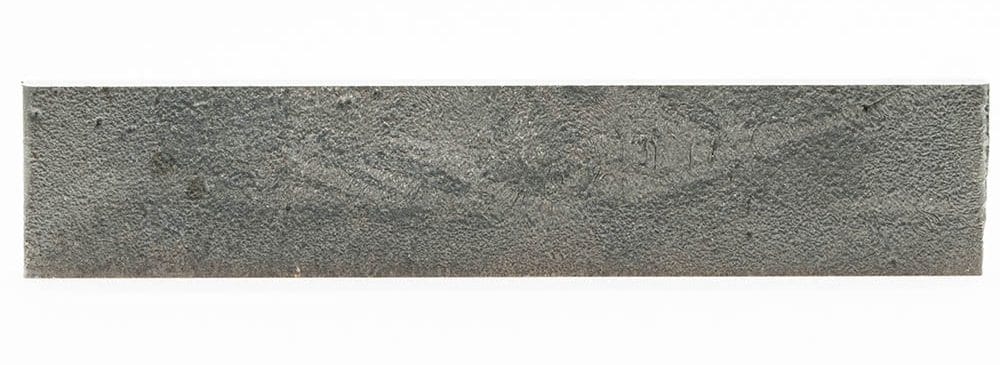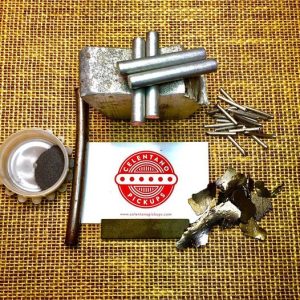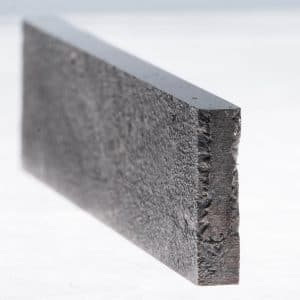Alnico custom melt
The first alnico was melted by Dr. Tokushichi Mishima, who patented its formula in Japan in 1931 and in the USA in 1932, beginning its global spread in different applications, such as audio speaker and military devices.
The alloy immediately went through remarkable performance improvements, thanks to more and more efficient manufacturing methods and new, rare ingredients and treatments.
Compositions of the same grades of alnico were different, and around the globe the same alloy had 2 or 3 names and small differences in cooling, tempering, or melting methods.
To the eye, an alnico bar always looks the same, and it’s not so easy to distinguish unless a professional measurements or analysis of its composition… or better still, a trained ear.
Measured in Gauss, its strength is expressed with BH max, product of Br (remanence) the measure of a magnetic attraction, and Hc (coercivity) the resistance to a contrary magnetic field.
Alnico grades may vary in cobalt content, so between the alloy we use, the weakest is the A3 aka ALNICU, has Copper and no Cobalt (medium value 6500 Gauss), then A2 (7000), A4 (8000) and A5 (12000).
Isotropic (circa 12% Cobalt%), anisotropic materials ( circa 20-25% Cobalt %), and high coercivity (hyco 30% Cobalt%) have huge differences in performance and in treatments, because the cobalt content increases together with its efficiency as output energy.
Practically speaking, alnico works as the soul of the electric guitar tone, invisibly defining the brunt of the instrument’s “voice”, and simply swapping it can have a range of effects on pickup performance, effecting sensitivity, volume, dynamics, sustain harmonics, and a host of other factors.
If you’re after a great, sand rough cast alnico alloy, we can help you to find the appropriate grade to get the tone you need.


